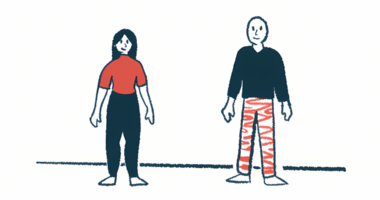MG Severity Linked With Female Sex, Obesity and Diagnostic Delay
Myasthenia gravis (MG) tends to be more severe in people who are female, obese, or who took a long time to get diagnosed, according to a survey including nearly half of all MG patients living in Sweden.
According to its researchers, nearly half of survey respondents reported having moderate or severe MG and being unsatisfied with their current disease status, highlighting the need for better MG treatments.
Findings were reported in the study, “Patient-Reported Symptom Severity in a Nationwide Myasthenia Gravis Cohort: Cross-sectional Analysis of the Swedish GEMG Study,” published in the journal Neurology.
A team of scientists in Sweden reported on the results of a survey — part of the Genes and Environment in Myasthenia Gravis study (GEMG) — in which hundreds of people with MG living in Sweden were invited to fill out a 106-item questionnaire about their health, disease history, and lifestyle.
In total, 1,077 people answered the survey. Based on estimates of MG prevalence in the country, researchers calculated that this group represents about 42% of all MG patients in Sweden. Of the respondents, 53% were female; respondents’ mean age was 64.3, and their mean disease duration was 14.6 years.
Patients with early onset disease — those who were diagnosed before age 50 — were mostly female (76%), more often reported having generalized symptoms at disease onset (50%), and having undergone a thymectomy or thymus removal surgery (74%).
Also of note, women with early onset MG tended to be diagnosed at a significantly earlier age (27.6) and were more likely to have generalized symptoms than men with early onset disease (mean onset age, 33.4).
“In our study we identified striking differences between females and males in the EOMG [early onset MG] group. Females presented with generalized symptoms to a larger extent and developed generalized disease to a much higher degree than both male patients with EOMG and patients with LOMG [late-onset MG] of both sexes,” the researchers wrote, noting a need for further investigation into the reasons for these sex differences.
To assess disease and symptom severity, researchers looked at scores of the Myasthenia Gravis-Activities of Daily Living (MG-ADL). Reported scores ranged from 0 to 18, with higher scores indicating a more severe disease.
While roughly 1 in 4 (26%) respondents had a MG-ADL score of 0 — indicating no disease activity — nearly half (47%) had a score of three or higher, corresponding to moderate or severe disease and reflecting an unsatisfactory symptom state.
The high rates of patients with a substantial disease burden “underscore a need to improve treatment algorithms and developing more effective disease-modulatory drugs,” the researchers wrote.
Statistical analyses also revealed that MG-ADL scores were significantly higher, on average, in individuals who were female, obese, or who had experienced a diagnostic delay of two years or more.
By contrast, people with university degrees were statistically more likely to have lower MG-ADL scores. Researchers speculated that this may be because those who are better educated are more likely to seek needed healthcare.
“Interestingly, neither disease subtype, disease duration nor age at study inclusion or tobacco use were correlated to MG-ADL score in our study,” the team wrote.
A noted study limitation was that, because of how the survey was conducted, it may be skewed toward people who have more severe disease and, as a result, more frequent interactions with healthcare providers. Researchers were also unable to assess how MG treatments might affect patient outcomes.







